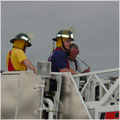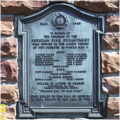|
| 2025 Incidents |
| January | 59 |
| February | 65 |
| March | 49 |
| April | 61 |
| May | 49 |
| June | |
| July | |
| August | |
| September | |
| October | |
| November | |
| December | |
| Total | 283 |
| 2024 Incidents |
| January | 76 |
| February | 57 |
| March | 32 |
| April | 43 |
| May | 39 |
| June | 67 |
| July | 48 |
| August | 145 |
| September | 66 |
| October | 67 |
| November | 46 |
| December | 59 |
| Total | 745 |
| 2023 Incidents |
| January | 50 |
| February | 59 |
| March | 31 |
| April | 52 |
| May | 47 |
| June | 42 |
| July | 42 |
| August | 42 |
| September | 57 |
| October | 66 |
| November | 56 |
| December | 32 |
| Total | 576 |
| 2022 Incidents |
| January | 50 |
| February | 53 |
| March | 43 |
| April | 42 |
| May | 46 |
| June | 57 |
| July | 41 |
| August | 50 |
| September | 67 |
| October | 58 |
| November | 44 |
| December | 69 |
| Total | 620 |
| 2021 Incidents |
| January | 27 |
| February | 30 |
| March | 41 |
| April | 33 |
| May | 53 |
| June | 37 |
| July | 62 |
| August | 61 |
| September | 61 |
| October | 58 |
| November | 36 |
| December | 68 |
| Total | 567 |
| 2020 Incidents |
| January | 34 |
| February | 32 |
| March | 25 |
| April | 21 |
| May | 34 |
| June | 27 |
| July | 39 |
| August | 46 |
| September | 51 |
| October | 36 |
| November | 44 |
| December | 31 |
| Total | 420 |
| 2019 Incidents |
| January | 47 |
| February | 45 |
| March | 40 |
| April | 37 |
| May | 41 |
| June | 35 |
| July | 62 |
| August | 36 |
| September | 62 |
| October | 54 |
| November | 53 |
| December | 47 |
| Total | 559 |
| 2018 Incidents |
| January | 65 |
| February | 36 |
| March | 29 |
| April | 81 |
| May | 62 |
| June | 31 |
| July | 47 |
| August | 47 |
| September | 60 |
| October | 68 |
| November | 53 |
| December | 32 |
| Total | 611 |
| 2017 Incidents |
| January | 30 |
| February | 44 |
| March | 53 |
| April | 53 |
| May | 46 |
| June | 53 |
| July | 60 |
| August | 50 |
| September | 62 |
| October | 54 |
| November | 53 |
| December | 38 |
| Total | 596 |
| 2016 Incidents |
| January | 34 |
| February | 61 |
| March | 34 |
| April | 48 |
| May | 40 |
| June | 34 |
| July | 44 |
| August | 51 |
| September | 55 |
| October | 54 |
| November | 34 |
| December | 43 |
| Total | 532 |
| Previous Incidents |
| 2010 | 550 |
| 2011 | 524 |
| 2012 | 549 |
| 2013 | 534 |
| 2014 | 523 |
| 2015 | 538 |
| 2016 | 532 |
| 2017 | 596 |
| 2018 | 611 |
| 2019 | 559 |
| 2020 | 420 |
| 2021 | 567 |
| 2022 | 620 |
| 2023 | 576 |
| 2024 | 745 |
Potsdam In Pictures



|
|
Holiday Fire Safety Tips
|
|

The holidays mean yummy food, parties, and lots of family and friends. Unfortunately, it's also the time of year when there are a lot of home fires. That's where Potsdam Fire Department comes into the picture. We would like to take this opportunity to wish everyone a safe and happy holiday season. The firefighters at the Potsdam Fire Department would also like to remind everyone to follow the holiday safety tips below so we don't have to make an unexpected trip to your residence or business.
|
|
Checklist for grown-ups
That's right kids! It's your turn to make sure the grown-ups in your home are being fire-safe. Help Sparky and the Potsdam Fire Department keep an eye on them (or two to be extra safe). Also, use our tips below to make sure everything in your home is in check.

 Space heaters: Keep portable and space heaters at least three feet (one metre) from anything that can burn. Space heaters: Keep portable and space heaters at least three feet (one metre) from anything that can burn.

Holiday cooking: We love all that holiday food, but remember kids should stay away from cooking areas. Declare a three-foot "kid-free zone" around the stove.
 Candles: Did you know that more candle fires start in living rooms, dens, dining rooms, and kitchens during the month of December than any other month of the year? Candles: Did you know that more candle fires start in living rooms, dens, dining rooms, and kitchens during the month of December than any other month of the year?
 Make sure candle holders are in a safe place where they can't be knocked over. Make sure candle holders are in a safe place where they can't be knocked over.
 Kids should never be left alone with a burning candle. Leave the candles to the grown-ups. Kids should never be left alone with a burning candle. Leave the candles to the grown-ups.
 Candles, matches and lighters should be locked up high and out of kid's sight and reach. Candles, matches and lighters should be locked up high and out of kid's sight and reach.

Holiday lights: Lights look pretty, but they can also cause fires. If your lights have cracked or frayed cords, throw them away.
Christmas Trees: If you buy an artificial tree, be sure it is labeled "flame retardant." If you have a real Christmas tree, water it several times a day. And make sure it doesn't block your exit from the room.
|
| Carefully decorating Christmas trees can help make your holidays safer.
Facts & figures
- In 1999, Christmas trees were the first item ignited in an estimated 370 home fires, resulting in 5 deaths, 60 injuries and $15.7 million in direct property damage.
- The leading heat source attributed to Christmas tree fires, civilian injuries and property damage was electrical arcing, accounting for 130 fires (34%), no civilian deaths, 20 civilian injuries and $5.9 million in direct property damage in 1999.
- The leading type of equipment involved in the ignition of Christmas trees were lights and cords and plugs.
Source: NFPA's One-Stop Data Shop
Safety tips
- When decorating Christmas trees, always use safe tree lights. (Some lights are designed only for indoor or outdoor use, but not both.) Larger tree lights should also have some type of reflector rather than a bare bulb and all lights should be listed by a testing laboratory.
- Never use electric lights on a metal tree.
- Follow the manufacturer's instructions on how to use tree lights. Any string of lights with worn, frayed or broken cords or loose bulb connections should not be used.
- Always unplug Christmas tree lights before leaving home or going to sleep.
- Never use lit candles to decorate a tree, and place them well away from tree branches.
- Try to keep live trees as moist as possible by giving them plenty of water daily. Do not purchase a tree that is dry or dropping needles.
- Choose a sturdy tree stand designed not to tip over.
- When purchasing an artificial tree, be sure it is labeled as fire-retardant.
- Children are fascinated with Christmas trees. Keep a watchful eye on them when around the tree and do not let them play with the wiring or lights.
- Store matches and lighters up high, out of the reach of children, preferably in a locked cabinet.
- Make sure the tree is at least three feet (one meter) away from any heat source and try to position it near an outlet so that cords are not running long distances. Do not place the tree where it may block exits.
- Safely dispose of the tree when it begins dropping needles. Dried-out trees are highly flammable and should not be left in a house or garage, or placed against the house.
|
|
|

Click Here For More NFPA Winter/Holiday Safety Tips
|
|
|
|
|




